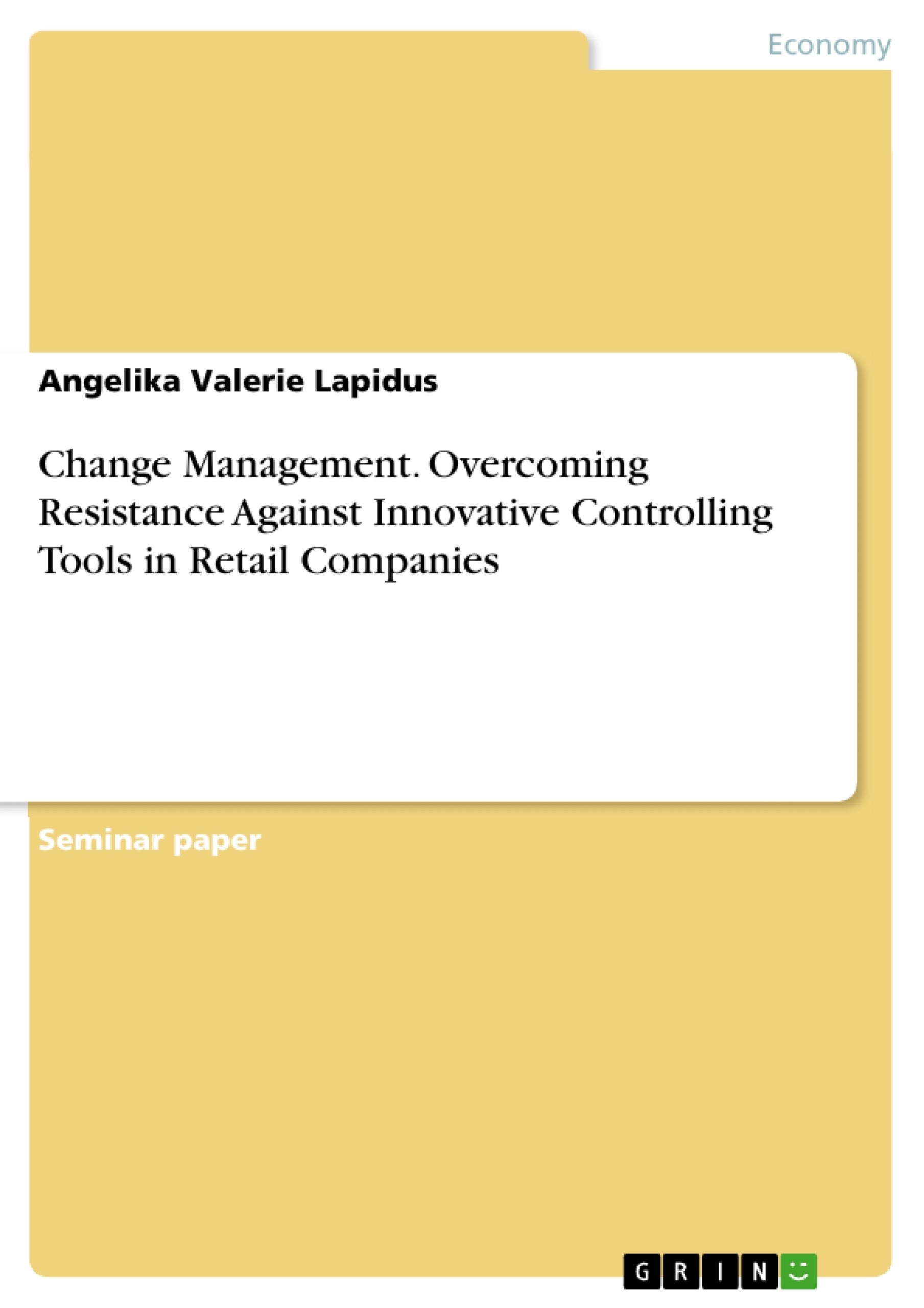The following paper aims to show the origin of resistance resulting from changing old controlling tools to more innovative ones in retail companies. Furthermore there will be strategies presented to avoid and overcome such resistances. For this purpose, typical situations as well as exemplary solutions for dealing with resistances in practice are outlined within a theoretical framework. Highly relevant for companies of all sizes and industries, this topic is of particular importance for retail companies. This results mainly from the conservative corporate culture, the high margin pressure and the associated risk aversion in retail companies.
Successful and future-oriented corporate management is based on efficient and effective controlling tools that form a holistic system. Its purpose is satisfying internal and external information needs as well as providing a mandatory base for the management of a company with which decisions can be made at all times. The demands for modern controlling tools are very diverse. Factors crucial to the success of a company must always be depicted in a consistent manner and controlling-relevant financial as well as non-financial information must be presented transparently and in a recipient-oriented fashion. At the same time, past and future-oriented assertions must be made that provide a reliable idea of the current situation of a company. A company's controlling tools should meet the expectations of externs. The greatest challenges here include regulatory and legal requirements as well as implicit expectations of the capital markets with regard to transparency and quality of the tools used. This applies in particular to innovative forms of financing, which are also becoming popular in the retail sector.
Table of Contents
List of Abbreviations
List of Figures
List of Tables
1. Introduction
1.1 Topic Background
1.2 Thesis Structure
2. Theoretical Framework: Change Management
2.1 Definition
2.2 Causes and Reasons for Change
2.3 Fundamental Prerequisites
2.4 Lewin's Change Model
3. Overcoming Resistance
3.1 Forms of Resistance
3.2 Causes and Reasons for Resistance
3.3 The Change Curve
4. Change of Controlling Tools in a Retail Company
4.1 T riggers of Change
4.2 Participants in the Change Process
4.3 Resistance to Change
4.4 Strategies for Avoiding and Overcoming Resistance
5. Conclusion
6. References
- Quote paper
- Angelika Valerie Lapidus (Author), 2021, Change Management. Overcoming Resistance Against Innovative Controlling Tools in Retail Companies, Munich, GRIN Verlag, https://www.grin.com/document/1243351
-

-

-

-
Upload your own papers! Earn money and win an iPhone X. -

-
Upload your own papers! Earn money and win an iPhone X. -

-
Upload your own papers! Earn money and win an iPhone X. -

-
Upload your own papers! Earn money and win an iPhone X. -

-
Upload your own papers! Earn money and win an iPhone X. -

-
Upload your own papers! Earn money and win an iPhone X. -

-
Upload your own papers! Earn money and win an iPhone X. -

-
Upload your own papers! Earn money and win an iPhone X. -

-
Upload your own papers! Earn money and win an iPhone X.

